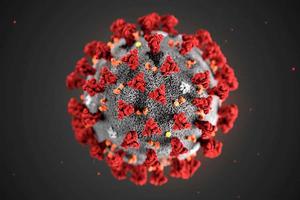In the Community
AU Public Health Scholars “Go Inside the Outbreak” Class explores public health implications of COVID-19 pandemic in real time

The COVID-19 catastrophe is reshaping the future of US healthcare, and our next generation of health professionals will require a deep understanding of the pandemic’s complexities, from health inequities and disparities, to disease transmission and mitigation, to recovery efforts and the rise of telemedicine.
In other words, future public health professionals will need to hit the ground running. To prepare them and give them a once-in-a-lifetime learning opportunity, AU Public Health Scholars Program Director Melissa Hawkins designed this summer’s Emerging Issues in Public Health Seminar class to focus solely on the pandemic — even as events were unfolding in real time.
“Almost daily, we continued to find out new information about COVID-19 and learned about the impact it had on different populations as it continued to spread,” says Olivia Gonyea (BA public health and SIS minor ’22), a student in Hawkins’ seminar. “Being in a class setting during this time gave me and my peers a place to reflect on changes in research, models, and its overall impact on different populations.”
History, Epidemiology, and Personal Experiences
This seminar looked back to past pandemics, explored the current and evolving situation with coronavirus, and examined how individuals and society will be transformed by this global experience.
“We are in a changing world right now, experiencing this moment together in real time,” says Hawkins, an epidemiologist who has written extensively on the pandemic and was interviewed this week by Sanjay Gupta on CNN.
“The pandemic has revealed how we value health and how we prepare for disease, and many questions remain. Now is the time to engage in difficult conversations that can lead to a healthier world. It was also important that students had a place and space to reflect on their personal experiences so far.”
The students began class with a historical overview of pandemics by reading The Great Influenza, David Barry’s seminal book about the 1918 influenza outbreak. On a more personal note, Hawkins asked each student to choose a photograph that they felt represented the pandemic to them. The students shared their photos, from heartwarming car parades to starkly empty streets, and discussed the personal and mental health impacts of the crisis.
Then the class dove into epidemiological modeling, comparing and contrasting the types of real-time data tracked by the Johns Hopkins, University of Pennsylvania and University of Washington models, from infection and hospitalization rates to deaths. “We discussed what models can and can’t do, and their assumptions,” Hawkins explains. “They are only as good as the data that goes into them.”
Kai Wasson (BS public health ’22) says that he appreciated how the class challenged students to apply public health lessons learned from previous pandemics, such as the Influenza pandemic of 1918, to the ongoing COVID-19 pandemic. “We had the opportunity to have various leading public health professionals discuss emerging forecasting models and effective health communication strategies.”
Health Inequities and Disparities
The students also studied the inequities and health disparities that led to COVID’s elevated social and economic impact on people of color, including increased susceptibility, exposure, illness, and death — and examined how these changes will shape various systems in the coming years.
“We used the seminar time to discuss the current shortcomings of the response to COVID-19, such as the disproportionate rates among BIPOC (Black, Indigenous, and People of Color) communities, and to consider public health initiatives that would most effectively address these associated health disparities,” Wasson says.
Hawkins’ final assignment for the class was to write a persuasive blog piece or letter-to-the-editor, using evidence-based arguments to advocate for an issue related to the pandemic. The students wrote about a wide range of topics including mental health, food insecurity, school re-openings, and preparedness.
“Many submitted their letters to local newspapers and other news outlets, so they are seeing the power of turning their passion to action as well, says Hawkins.
The Next Public Health Challenge
Wasson says he feels lucky to be studying public health right now. “I also feel a level of responsibility to learn from these testing times, and that we use the devastating losses that resulted from an inadequate response to ensure the public health system is better equipped for crises of the future,” he explains. “The original passion I had for studying public health has only multiplied since my arrival at AU. As I look to my future, I feel excited for the dynamic roles I may play in addressing not only the COVID-19 pandemic, but in the next public health challenge.”
Gonyea agrees. “I think that taking this class right now is a unique opportunity because it gives us a better understanding of the true nature of pandemics, which are non-linear and intricate. It has given me a great foundation of pandemic prevention, response, and recovery and the many considerations that must be taken into account during these processes. This experience and knowledge will assist me in my future as a public health professional and I am thankful for the opportunity to be in this class at this time.”
